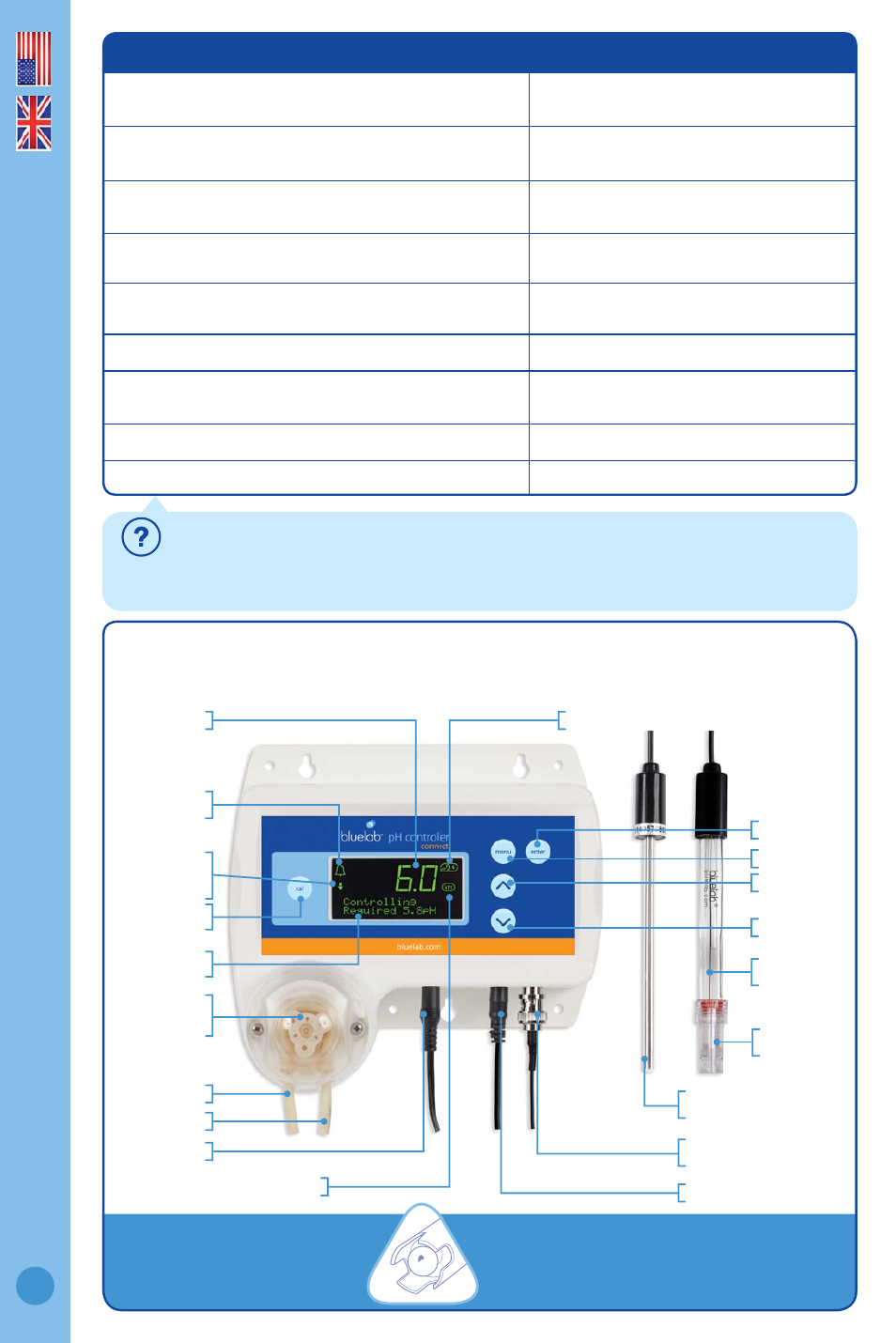Features 3, Bluelab ph controller connect 3, Bluelab ph controller connect – Bluelab pH Controller Connect Manual User Manual
Page 3: Attention, If it dries, it dies, Features, Keep your ph probe tip wet, English

English
3
Features
ONE Bluelab Connect Stick is required, sold seperately Flashing high and low alarm with safety
control lockouts
Local and Cloud data logging capability (download Free
Bluelab Connect Software)
‘Plant-safe’ green back lit LCD with
adjustable brightness and contrast
Adjustment of control settings from a local PC via
connect software
Auto resume dosing on restart after
power loss
Option to view data and current status remotely via
Google Docs™*
Water resistant, wall mount design
Automatic control and monitoring of system pH with
reservoirs up to 200 US Gallons / 760 Liters
13 foot (4 meter) acid/alkaline resistant
tubing supplied
Large, easy to read display
International power supply
Simple push button pH calibration with on screen
instructions
Separate Bluelab Temperature Probe
(for pH ATC)
Easy to navigate menu to program and adjust settings Replaceable double junction pH probe
Dosing lockouts to protect from over-dosing
Replaceable peristaltic pump and tubing
Bluelab pH Controller
Connect
What is Plant Safe? Green lights are safe for continued growth during a plant’s fruiting
stage when hours of darkness are required.
What are Dosing Lockouts for? They are a built-in safety feature that stops pH dosing if
an error is detected in the system (see FAQs for more detail).
Alarm on
symbol
Control dosing
up or down
symbols
pH display
successful pH calibration symbol
pH calibration
button
Peristaltic
pump with
cover
Inlet tube
Outlet tube
pH controller
connect status
Power input
pH probe BNC
connector
Bluelab Temperature
Probe (for pH ATC)
Bluelab
pH Probe
ATC symbol
Temperature probe input
Up button
Menu button
Enter button
Down button
pH probe
storage cap
ATTENTION
If it dries, it dies!
Keep your pH probe tip wet
at all times to avoid permanent damage
